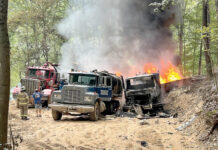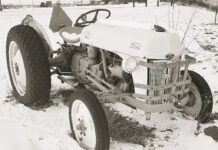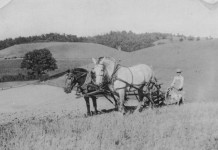By Paige (Irwin) Shaffer
Summer cookouts are right around the corner. While these gatherings are full of fun and great memories, they also present a unique set of food safety challenges.
Food safety may not always be top-of-mind during family events, but just as we make sure someone brings the favorite dessert, we must also be mindful about keeping food safe. Paying attention to food safety helps ensure that everyone enjoys the celebration without any unwanted health issues.
Keeping food safe during the thawing process
The National Restaurant Association outlines four safe methods for thawing food:
Refrigeration. Thaw food in the refrigerator, which allows it to defrost while maintaining a safe internal temperature.
Cold running water. Place food under constant running, drinkable water that is not warmer than 70 F for no more than four hours.
Microwave. Use the microwave to thaw food that will be cooked immediately afterward.
As part of the cooking process. Some foods can be safely thawed while cooking.
Never thaw food on the countertop — doing so significantly increases the risk of harmful bacteria growth.
Safe internal temperatures
Different types of food require specific internal temperatures to be considered safe for consumption. The following are recommended by the U.S. Department of Agriculture:
• Beef, pork, veal and lamb (steaks, chops or roasts): 145 degrees Fahrenheit
• Uncooked fresh or smoked ham: 145 degrees F
• Fish and shellfish: 145 degrees F
• Ground meats: 160 degrees F
• Eggs: 160 degrees F
• All poultry: 165 degrees F
• Casseroles: 165 degrees F
When checking temperatures, use a food thermometer and test the thickest part of the food in more than one spot.
For more on thermometers and usage, visit www.fsis.usda.gov/food-safety/safe-food-handling-and-preparation/food-safety-basics/food-thermometers#thermometer10.
Avoiding cross-contamination
Avoiding cross-contamination is crucial to keeping your event safe. Ensure that each dish has its own serving utensil. When preparing food, don’t use the same utensils for raw and cooked foods. For example, tongs used on raw meat should not be reused on cooked burgers unless it has been washed. These simple precautions go a long way in preventing foodborne illnesses.
Managing food sitting out and ice safety
Food left out too long without temperature control can enter the “danger zone” (41 degrees F–135 degrees F), where bacteria thrive.
Hot foods can sit out for up to four hours after being removed from heat.
Cold foods can remain out for up to six hours after being removed from refrigeration, if the temperature doesn’t rise above 70 degrees F.
Ice used to chill food or drinks should not be reused in beverages. Designate separate ice for cooling and drinking and clearly communicate this to guests.
Conclusion
Food safety doesn’t have to take the fun out of your summer cookouts. By following a few key practices — like thawing food properly, cooking to the right temperatures, avoiding cross-contamination, and monitoring how long food sits out — you can help ensure that your gathering is remembered for the right reasons. Taking these precautions means everyone gets to enjoy good food and good company without the risk of illness. So, fire up the grill, but keep safety on the menu too!
(Paige (Irwin) Shaffer is a family and consumer sciences/4-H youth development educator with Ohio State University Extension in Columbiana County. She can be reached at 330-870-1175 or irwin.353@osu.edu.)

















